Here are brief bios of the major artists considered in the class, listed in order of birth.
For this week only, they include quite a few who were not artists, but are still important to the story.
An alphabetical listing of artists for the whole course can be found at the
BIOS link on the syllabus page.
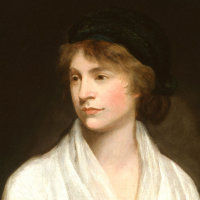 |
Mary Wollstonecraft Godwin, 1759–97. English writer.
Mary Wollstonecraft, wife of the anarchist philosopher William Godwin and mother of the future Mary Shelley, was one of the most original women of her age, breaking numerous conventions of decorum. She was a first-hand witness of the French Revolution, and published an analysis of its moral significance. Her most important work for subsequent generations, however, was A Vindication of the Rights of Woman (1792), a foundation document of feminism.
|
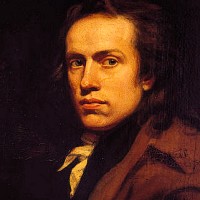 |
John Opie, 1761–1807. English painter.
Originally hailed as an untaught genius, Opie had a successful career as a portrait painter, and became a professor at the Royal Academy, even though he failed to retain his early freshness.
|
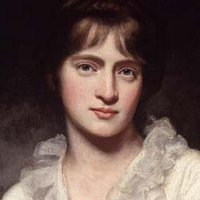 |
Amelia Opie, 1769–1853. English writer.
Amelia Alderson was raised in an activist family, and became friends with Mary Wollstonecraft and others. In addition to writing several novels, she was also an active polemicist for the Abolitionist cause, writing the poem for children, "The Black Man's Lament" of "How Sugar is Made." The image is a detail of a portrait by her husband, John Opie.
|
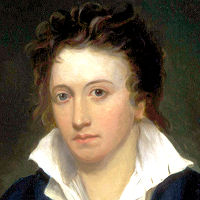 |
Percy Bysshe Shelley, 1792–1822. English poet.
With his friend Byron, Shelley was the outstanding English Romantic poet of the generation after Wordsworth and Coleridge. Politically engaged, and intellectually acute, he was an avowed atheist, a stance that got him expelled from Oxford, and kept him out of England for much of his short career. He drowned in a boating accident off Livorno at the age of 29. His second wife, Mary Godwin Shelley, was the author of Frankenstein.
|
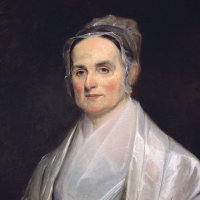 |
Lucretia Mott, 1793–1880. American activist.
Mott was a Quaker minister and ardent abolitionist. As a delegate to the 1840 Anti-Slavery Convention in London, she met Elizabeth Cady Stanton, and together they organized the Seneca Falls Convention for Woman's Rights in 1848, a landmark event in American feminism.
|
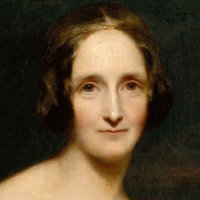 |
Mary Wollstonecraft Shelley, 1797—1851. English novelist.
The daughter of the political philosopher William Godwin and the feminist activist Mary Wollstonecraft, Shelley fell in love with the poet Percy Bysshe Shelley when he was already married and eloped with him to the continent to avoid ostracism at home. She wrote her most famous novel, Frankenstein (1818), in response to a competition with Lord Byron, John Polidori, and her lover during a rainy holiday in Switzerland.
|
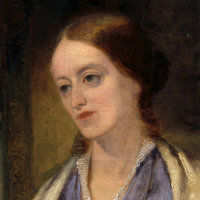 |
Margaret Fuller, 1810–50. American activist.
A prodigious intellect known when barely in her thirties as “the best-read person, male or female, in New England,” Fuller was the first woman to be permitted to use the Harvard library. Emerson appointed her as the first editor of his Transcendantalist Journal, The Dial, in which she published her 1843 book Woman in the Nineteenth Century, now hailed as the first great work of American Feminism. Fuller went on to make her living as a journalist, writing for the New York Post, which sent her to Europe to cover the Italian War of Independence.
|
 |
Elizabeth Gaskell, 1810–65. English novelist.
The daughter of a Unitarian minister who gave up his position in the North for reasons of conscience, Mary Stevenson married another minister, who moved to Manchester, which became the disguised setting for North and South (1855). She published this, its predecessor Cranford (1853), and a biography of Charlotte Brontë (1857) under the name "Mrs Gaskell," but used a pseudonym before that.
|
 |
Elizabeth Cady Stanton, 1815–1902. American activist.
Shocked by the exclusion of the female delegates from the 1840 Anti-Slavery Convention in London, which he attended with her Alolitionish husband, Stanton dedicated the rest of her life to fighting for women's rights, including organizing the landmark Seneca Falls Convention in 1848, and then teaming with Susan B. Anthony to prepare the case for female suffrage, which was not obtained until after her death.
|
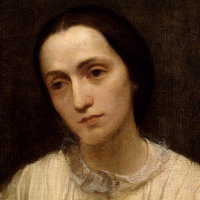 |
Julia Margaret Cameron, 1815–79. English photographer.
Julia Margaret Pattle was born in British India, and remained there until her mid-forties as a society hostess until her husband retired to England in 1845. In 1863, when she was 48, she received a box camera as a Christmas present from her daughter, as "something to amuse her." Indeed it did, and she became famous for her portraits of famous sitters, such as her neighbor Tennyson, and inventive restagings of literary works.
|
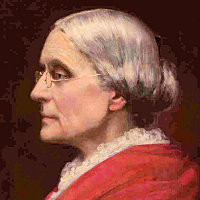 |
Susan B. Anthony, 1820–1906. American activist.
As a crusader in turn for Abolition, Temperance, and Suffrage, Anthony joined her organizational skills to the oratory of her friend Elizabeth Cady Stanton to make the formidable duo that eventually made the granting of the vote to women virtually inevitable, even though it did not occur until after their deaths.
|
 |
Coventry Patmore, 1823–96. English poet and critic.
Patmore is best known for his long poem The Angel in the House, in praise of his wife Emily, published serially between 1854 and 1862. Though decried today, it became immediately popular as an expression of the Victorian ideal of a perfect marriage.
|
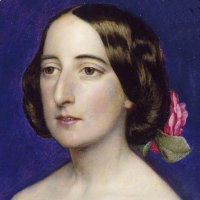 |
Emily Andrews Patmore, 1824–62. English writer.
The wife of poet Coventry Patmore, and thus the woman eulogized (and fossilized?) in his poetry sequence The Angel in the House, Emily Patmore was also a writer, publishing some novels and poems, and a handbook for domestic servants.
|
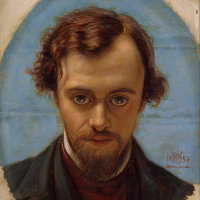 |
Dante Gabriel Rossetti, 1828–82. English painter and poet.
A member of an unusually talented and literary family (father a Dante scholar, sister Christina a poet), he hesitated before devoting himself to painting, but then in 1848 became the co-founder and virtual leader of the Pre-Raphaelite Brotherhood, which influenced the course of Victorian art for the rest of the century. Although he became mannered in later life, his earlier works have a remarkable freshness and sincerity.
|
 |
Elizabeth Siddal, 1829–62. English painter, poet, and model.
Lizzie Siddal was the go-to model for many of the Pre-Raphaelites, including for Millais' Ophelia and many paintings by Dante Gabriel Rossetti, who became her husband. Siddal was also a poet, and a painter herself. Scholars have been divided on how many of her few surviving works were collaborations with Rossetti or entirely her own.
|
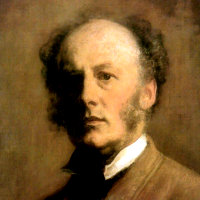 |
John Everett Millais, 1829–96. English painter.
Millais was, with DG Rossetti and William Holman Hunt, one of the founders of the Pre-Raphaelite Brotherhood in 1848. At first noted for his highly realistic treatment of religious and literary subjects, he later adopted a more sentimental style, with which he was hugely successful.
|
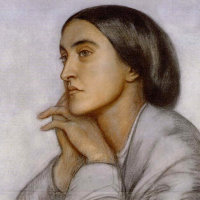 |
Christina Rossetti, 1830–94. English poet.
Christina was the younger sister of Dane Gabriel Rossetti and the model for several of his paintings. She began publishing her poetry in 1848. Although remembered for his Christmas carols "Love Came Down at Christmas" and "In the Bleak Midwinter," her popularity declined after her death, but later commentators point to the extraordinary language and psychosexual suggestion in works like Goblin Market (1862), possibly inspired by her volunteer work at a Home for Fallen Women.
|
 |
Louisa May Alcott, 1832–88. American novelist.
Raised in New England by her Transcendentalist parents, Bronson and Abigail Alcott, Louisa knew such luminaries as Emerson, Thoreau, and Hawthorne. When her family encountered financial trouble, she began writing lurid fiction, like Jo March in her novel Little Women (1868), based upon her own family and three sisters. She was an abolitionist and feminist all her life, and never married.
|
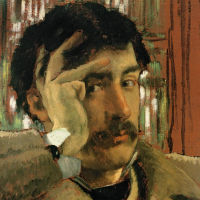 |
James Tissot, 1836–1902. French-born English painter.
Tissot had a highly successful career as a society painter in Paris before he moved to London in 1871. His works, which now belong firmly in the history of British art, mostly depict affluent subjects in contemporary situations with a light narrative content.
|
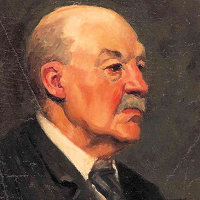 |
Winslow Homer, 1836–1910. American painter.
With JMW Whistler, one of the greatest American painters of his time, he too spent some years in Europe, but reacted with strongly designated areas of light and dark and almost heroic figures. He later retired in seclusion to the coast of Maine, painting the seascapes that were his favorite subject.
|
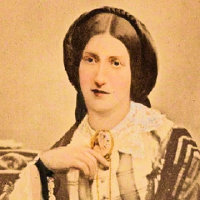 |
Isabella Beeton, 1836–65. English writer.
Despite her short life, Mrs. Beeton (as she is universally known) achieved immortality, at least by reputation, as the author of the Book of Household Management in 1861, which not only offered recipes and guides to every aspect of good housekeeping, but also laid down the proper conduct of everybody in the household, from mistress to servants.
|
 |
Edward Lamson Henry, 1841–1919. American painter.
An American genre painter, celebrated in his time, he was born in Charleston but studied in New York and later Paris (with Courbet, among others). He is best known for scenes of contemporary life and American nostalgia, rendered in minute detail.
|
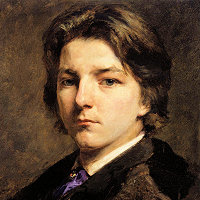 |
Frank Holl, 1845–88. English painter.
Holl painted mainly narrative works with strong emotions in a broad-brushed style with much chiaoscuro, though later in his unfortunately short life he turned to commissioned portraiture. He is thought to have died of overwork.
|
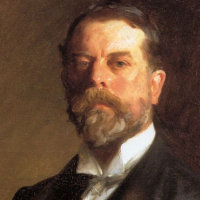 |
John Singer Sargent, 1856–1925. American painter.
Sargent was born in Florence, the son of wealthy cultured parents, and much of his career was spent in Europe, although his rising fame as the preeminent society portraitist of his day also took him back to America. He is said to have hated portraiture, though, and diversified into landscapes and watercolors for his own satisfaction.
|
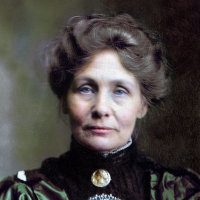 |
Emmeline Pankhurst, 1858–1928. English activist.
Emmeline Pankhurst, later aided by her daughters Christabel and Sylvia, all women of status and privilege, galvanized the British suffrage movement in the years before WW1 by organizing mass demonstrations and using the technique of civil disobedience to get themselves arrested and endure imprisonment and ill-treatment as martyrs for the cause.
|
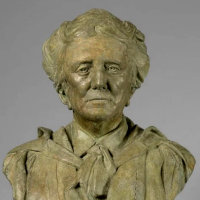 |
Ethel Smyth, 1858–1944. English composer.
Dame Ethel Smyth was known as much for her political and feminist activism as for her music, which was strongly influenced by her training and early career in Germany. Her best-known opera, The Wreckers (1906) contains some excellent music.
|







































































